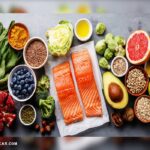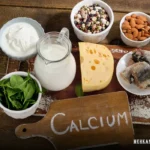
04 Oct Navigating the Plate: The Best and Worst Choices for Type 2 Diabetes Diet
Introduction:
Living with Type 2 diabetes diet often means making mindful choices, especially when it comes to what you eat. A well-balanced diet plays a vital role in managing blood sugar levels, promoting overall health, and preventing complications. In this comprehensive guide, we’ll explore the best and worst choices for a Type 2 diabetes diet, helping you make informed decisions for a healthier lifestyle.
The Best Choices:

Whole Grains:
Incorporate whole grains like brown rice, quinoa, and whole wheat into your diet. These grains provide essential nutrients and fiber, promoting better blood glucose control.
Leafy Greens:
Leafy greens such as spinach, kale, and Swiss chard are rich in vitamins, minerals, and antioxidants. They have a minimal impact on blood glucose levels while offering numerous health benefits.
Lean Proteins:
Opt for lean protein sources like poultry, fish, tofu, and legumes. Protein helps maintain muscle mass and keeps you feeling full, minimizing the temptation to overeat.
Healthy Fats:
Include sources of healthy fats like avocados, nuts, and olive oil. These fats contribute to heart health and can help stabilize blood glucose levels.
Berries:
Berries, such as blueberries, strawberries, and raspberries, are low in sugar and high in antioxidants. They make for a tasty and diabetic-friendly snack.
The Worst Choices:

Refined Carbohydrates:
Avoid refined carbohydrates like white bread, sugary cereals, and pastries. These can cause rapid spikes in blood glucose levels and contribute to insulin resistance.
Sugary Beverages:
Steer clear of sugary drinks like sodas, fruit juices, and energy drinks. Opt for water, herbal tea, or infused water to remain hydrated without the added sugars.
Processed Foods:
Processed foods often contain unhealthy trans fats, excessive sodium, and hidden sugars. Choose whole, nonprocessed foods whenever possible to better control your diet.
Fried Foods:
Fried foods can lead to inflammation and negatively impact insulin sensitivity. Opt for healthier cooking methods such as baking, grilling, or steaming.
Excessive Alcohol:
While moderate alcohol consumption may be acceptable, excessive drinking can interfere with blood sugar levels. Limit alcohol intake and choose lower-carb alternatives if you decide to indulge.
All In All

Crafting a Type 2 diabetes diet involves making thoughtful choices that prioritize nutrient-rich foods while avoiding those that can adversely affect blood sugar levels. By including whole grains, leafy greens, lean proteins, and healthy fats in your meals, and steering clear of refined carbohydrates, sugary beverages, and processed foods, you can take significant strides toward managing your diabetes and improving your overall well-being. Remember, small changes can lead to significant improvements, so embrace a balanced and sustainable approach to nutrition for a healthier life with Type 2 diabetes diet.





No Comments